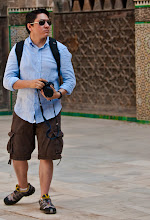This principles are based on eye studies that you can take advantage for more compelling pictures
- The slowest film you can buy is ISO 25, with DSLR's going npw tp ISO 6400 your camera sees better in the dark than you do. So enjoy this functionality and go shoot in the dark. Dont be afraid of some noise
- The eyes love lines, especially horizons. Use them to your advantage, keep lines straight include points of intersection, and put your subject close to corners
- Avoid bright pupil contracting lights in the eyes when shooting portraits, or score some belladona
- Place someone or something moving to the right in the foreground (perhaps a couple walking on the beach) and in the background above their heads place objects projecting to the left such as cliffs and headlands)
- When shooting B&W make sure you have enough contrast to keep viewer's attention where you want it. And dont forget those all important lines and faces
- Use split ND density filters in sunshine and high dynamic range photography at night to make your pictures look more like your actual experience of the scene.
- With a focal length of about 22mm and a field of view of almost 180 degrees at its extreme our eyes are capable of f3.5 wide open. Then, only the 2 degrees in the center of the retina an area called the fove us sharp. This is maybe why shallow DOF is very appealing. So use it to draw attention straight to your subject. Extreme DOF can also introduce elements of surprise to your photo
- When we view pictures our brains can identify and make associations with a range of blurry and indistinct elements, essentially filling the blanks due to the fact that with a 120 degree vuew field of view the eyes resolution is around 576 megapixels.
- Studies show that 75% of the most appealing paintings across 3 centuries showed a light source above and left.




0 comments:
Post a Comment